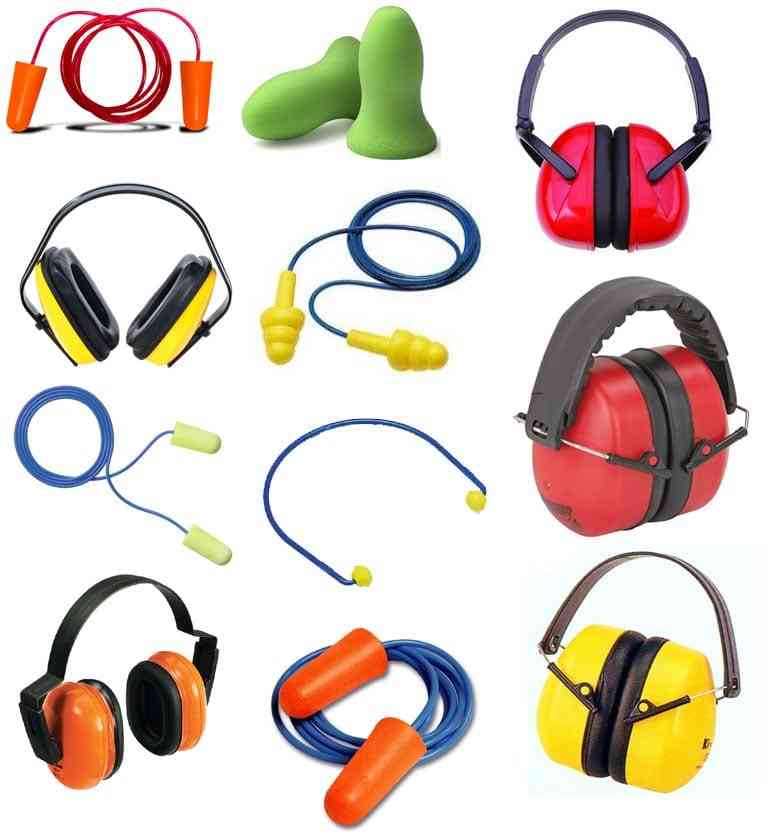You may be surprised to discover that numerous home appliances can produce hearing risk at home. Hearing loss caused by noise is insidious and permanent. Inner ear nerve related hearing loss called sensorineural hearing loss is permanent. It can cause isolation at home and socially. It can also decrease efficiency at work. We advocate hearing conservation through careful use of such appliances and the use of hearing protection. Even short burst activities with high enough intensity can damage your hearing. For example a few second of hammering or using an electric blender in a confined environment.

What is the Loudness Scale?
You may be familiar with the term decibel (abbreviated as dB) the unit used to measure the intensity of a sound. It can be also known as the volume of noise. Here are some examples of dB readings. Normal conversation is about 60 dB, a lawn mower is about 90 dB, and a loud rock concert is about 120 dB. You can measure the volume of noise by a sound level metre.

5 Household items that are affecting your hearing.
Noise levels above 70 dB over a prolonged period of time may start to damage your hearing. Loud noise above 120 dB can cause immediate harm to your ears.
- Vacuum cleaners 70 dB plus
- Washing machines 75 dB plus
- Blender, food processors 90 dB plus
- Hair dryer 85 dB plus
- PHONE TOP LEVEL 105DB
I came across these interesting facts and was shocked at the time as I was never told in all my years of studying hairdressing that I needed to wear hearing protection. The blow dryers would be going most the day in the salon and although while they were on I knew they were loud, I just didn’t realise they may be damaging my hearing. This got me thinking what other professions out there may be unaware of the impact of noise exposure within their industry.
Comparison to noise at work
In Western Australia, legislation sets a workplace exposure standard of 85 dB(A) averaged over an eight hour period. Or a peak noise level of 140 dB(C).
For an excellent resource all about noise and its hazards please see the following link: https://www.commerce.wa.gov.au/worksafe/introduction-noise-work
What is the aftermath of extremely loud exposure?

What they didn’t know.
My Grandma around 1939/1945 World War II time was sent down into factories making ammunition in Bristol. It was badly bombed during the war. They never advised them to wear hearing protection and Nan has severe to profound hearing loss which is highly likely the contributing factor. This back then was not a unique case.
Dr. Daniel Fink a government health advisor explains.
“Sounds that are louder than 85 dB can cause permanent hearing loss”
85 dB noise exposure over a lifetime of work can be extremely damaging to your hearing. If we look at the loudness scale you’ll see some hair dryers go up to 90 dB and beyond. It is important to take this into account next time you purchase a blow dryer, blender or appliance. Do your own research regarding noise levels if you want to protect your hearing. I know when I’ve purchased hairdryers in the past I never had considered looking at the dB level, but I will from now on.
The occupational noise exposure standard of 85 dB is not appropriate in the workplace without taking measures to reduce noise exposure. The much lower 70 dB average noise exposure level is the only published safe noise level to protect the public’s hearing.
Perhaps someone can invent a quiet hairdryer and a blender for my superfood smoothies. My husband dislikes it when I put the blender on. He is quite noise sensitive. I’m sure you can relate.
PROFESSIONS AT RISK
MILITARY/ MILITARY PILOTS 110 -150 DB
BIG BORE RIFFLE AND PISTOLS 175DB OVER
GARBAGE MAN 85DB-100DB
CONSTRUCTION WORKER 85-140DB
LANDSCAPER 85-100DB
11 MORE JOBS THAT CAN PUT YOU AT RISK ACCORDING TO HEAR-IT.ORG
FLIGHT CREW
AIRPORT GROUND CONTROL STAFF
FARMER
PHYSICAL EDUCATION TEACHER
AMBULANCE DRIVER
MANUFACTURER OR FACTORY WORKER
DENTIST
ROCKSTAR/ATHLETE
BOUNCERS AND BARTENDERS
MOTOCYCLE RIDER/COURIER
NURSERY SCHOOL TEACHER (TEMPER TANTRUMS, SHOUTING CAN EASILY REACH 85DB PLUS)
MINER

It’s time to use protection.
Hearing protection in the form of ear plugs and ear muffs to protect what hearing you have. Your local Audiologist can also take an impression of your ear canal to make custom earplugs and musicians plugs. These usually offer a greater noise reduction than the ones at your pharmacy. They are a fantastic solution to assist you in loud noise environments such as concerts, festivals, bars, clubs and other loud noise places. They will greatly reduce the risk of temporary threshold shifts and can also minimise tinnitus that ringing in the ears.
Also regular hearing screenings can alert you early to any potential problems with your hearing.
If you would like the link to the sound level meter APP I would love to send you the link. It may benefit you to know what dB readings are in your daily activity and if you could do something to protect your hearing now so It’s not a bigger problem long term. Prevention is better than cure.
When someone in the family has a hearing loss, the entire family has a hearing problem. To book a free hearing test (screening) call Harmony Hearing & Audiology on 1800 020 406 or use online contact form: https://harmonyhearing.com.au/book-an-appointment/

Best regards
Rachel Mackendrick
